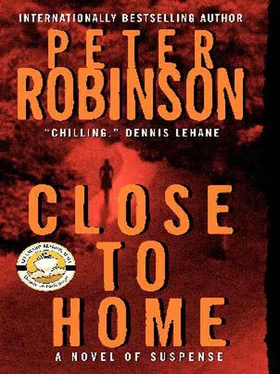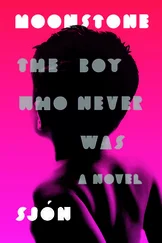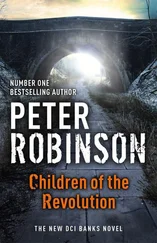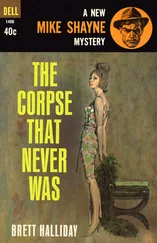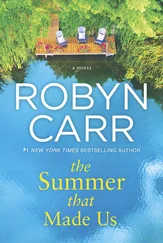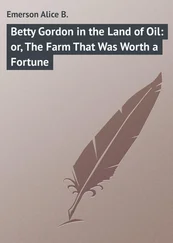Michelle had worked with her just over a month ago – her first case in her new posting – on some remains that had turned out to be Anglo-Saxon, not unusual in those parts, and they had got on well enough. The only thing she found hard to take was Dr. Cooper’s predilection for playing country-and-western music while she worked. She said it helped her concentrate, but Loretta Lynn had quite the opposite effect on Michelle.
Dr. Cooper and her graduate-student assistant, David Roberts, were bent over the partial skeleton arranging the small bones of the hands and feet in the correct order. It must be a difficult task, Michelle realized from the one brief anatomy course she had attended, and how you told one rib or one knuckle from another was quite beyond her. Dr. Cooper seemed to be doing well enough. She was in her early fifties, a rather stout figure with very short gray hair, silver-rimmed glasses and a no-nonsense manner.
“Do you know how many bones there are in a human hand?” Dr. Cooper asked without looking away from the skeleton.
“A lot?” Michelle answered.
“Twenty-six,” said Dr. Cooper. “Twenty-six. And awkward little buggers to make out, some of them.”
“Got anything for me yet?” Michelle took out her notebook.
“A little bit. As you can see, we’re still trying to put him back together again.”
“Him?”
“Oh, yes. You can take my word for that. The skull and pubis bear it out. Northern European, too, I’d say.” She turned the skull sideways. “See that straight facial profile, the narrow nasal aperture? All signs. There are others, of course: the high cranium, the eye sockets. But you don’t want a lesson in ethnic anthropology, do you?”
“I suppose not,” said Michelle, who actually found the subject quite interesting. Sometimes she thought she might have chosen the wrong career and should instead have become an anthropologist. Or perhaps a doctor. “Not very tall, though, is he?”
Dr. Cooper looked at the bones laid out on the steel trolley. “Tall enough for his age, I’d say.”
“Don’t tell me you know his age.”
“Of course. Only a rough guess, mind you. By measuring the long bones and applying the appropriate formula, we’ve calculated his height at around five foot six. That’s somewhere between a hundred and sixty-seven and a hundred and sixty-eight centimeters.”
“A kid, then?”
Dr. Cooper nodded and touched the shoulder with her pen. “The medial clavicular epiphysis – collarbone to you – is the last epiphysis in the body to fuse, normally in the mid-twenties, though it can occur anytime between fifteen and thirty-two. His hasn’t fused yet. Also, I’ve examined the rib ends and vertebrae. In an older person, you’d expect not only signs of wear and tear, but sharper ends and more scalloping on the ribs. His rib ends are flat and smoothly rounded, only slightly undulating, and the vertebrae show no epiphyseal rings at all. Also the fusion of ilium, ischium and pubis is in its early stages. That process usually takes place between the ages of twelve and seventeen.”
“So you’re saying he’s how old?”
“In my business it doesn’t pay to go out on a limb, but I’ll say between twelve and fifteen. Allow a couple of years either way as a fair margin of error. The databases we get these figures from aren’t always complete, and sometimes they’re out of date.”
“Anything else?”
“The teeth. Of course, you’ll have to bring in the odontologist to examine the roots and check the levels of fluoride, if there is any – it wasn’t introduced in toothpaste here until 1959 – but I can tell you three things right now. First off, there are no deciduous teeth left – that’s baby teeth – and the second molar has erupted. That means he’s aged around twelve, again give or take a couple of years, and I’d hazard a guess, given the other evidence, that he’s older rather than younger.”
“And the third thing?”
“A bit less scientific, I’m afraid, but judging by the general state of his teeth and the look of all these metal fillings in the posterior teeth, I’d guess vintage-school dentist.”
“How long ago was he buried there?”
“Impossible to say. There’s no remaining soft tissue or ligaments, the bones are discolored, and there’s some flaking, so I’d say more than a decade or two, but beyond that, it’s anyone’s guess until I’ve done more rigorous tests.”
“Any sign of cause of death?”
“Not yet. I need to get the bones cleaned up. Sometimes you can’t see knife marks, for example, because of the encrusted dirt.”
“What about that hole in the skull?”
Dr. Cooper ran her finger around the jagged hole. “Must have occurred during excavation. It’s definitely postmortem.”
“How can you tell?”
“If it had happened before death, there’d be signs of healing. This is a clean break.”
“But what if it was the cause of death?”
Dr. Cooper sighed as if she were talking to a dense undergraduate. Michelle noticed David Roberts grin, and he blushed when he saw her watching him. “If that were the case,” the doctor went on, “you’d expect a very different shape. Fresh bones break in a different way from old bones. And look at that.” She pointed to the hole. “What do you see?”
Michelle peered closely. “The edges,” she said. “They’re not the same color as the surrounding bone.”
“Very good. That means it’s a recent break. If it had happened around the time of death, you’d expect the edges to have stained the same color as the rest of the skull, wouldn’t you?”
“I suppose so,” said Michelle. “Simple, isn’t it?”
“If you know what you’re looking for. There’s a fractured humerus, too, right arm, but that’s healed, so I’d say it happened while he was alive. And do you see this?” She pointed to the left arm. “It’s slightly longer than his right arm, which may indicate left-handedness. Of course, it could be due to the fracture, but I doubt it. There are differences in the scapulae that also support my hypothesis.”
Michelle made some notes, then turned back to Dr. Cooper. “We know he was most likely buried where he was found,” she said, “because the remains were about three or four feet underground, but is there any way of knowing whether he died there or was moved there later?”
Dr. Cooper shook her head. “Any evidence of that was destroyed in the same way the skull and some of the other bones were damaged. By the bulldozer.”
“Where’s the stuff we found with the body?”
Dr. Cooper gestured toward the bench that ran the length of the far wall and turned back to the bones. David Roberts spoke for the first time. He had a habit of keeping his head down when he spoke to Michelle, and of mumbling, so she couldn’t always hear what he was saying. He seemed embarrassed in her presence, as if he fancied her. She knew that her combination of blond hair and green eyes had a captivating effect on some men, but this was ridiculous. Michelle had just turned forty and David couldn’t be more than twenty-two.
She followed him over to the bench, where he pointed to a number of barely recognizable objects. “We can’t say for certain that they’re his,” he said, “but all these were gathered within a short radius of the body.” When she looked more closely, Michelle thought she could make out scraps of material, perhaps fragments of clothing, a belt buckle, coins, a pen knife, a round-edged triangle of plastic, shoe leather, lace eyelets and several round objects. “What are those?” she asked.
“Marbles.” David rubbed one of them with a cloth and handed it to her.
It felt smooth to Michelle’s touch, and inside the heavy glass sphere was a double helix of blue. “Summer, then,” she said, almost to herself.
Читать дальше
